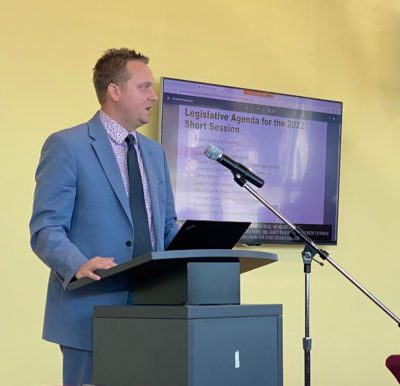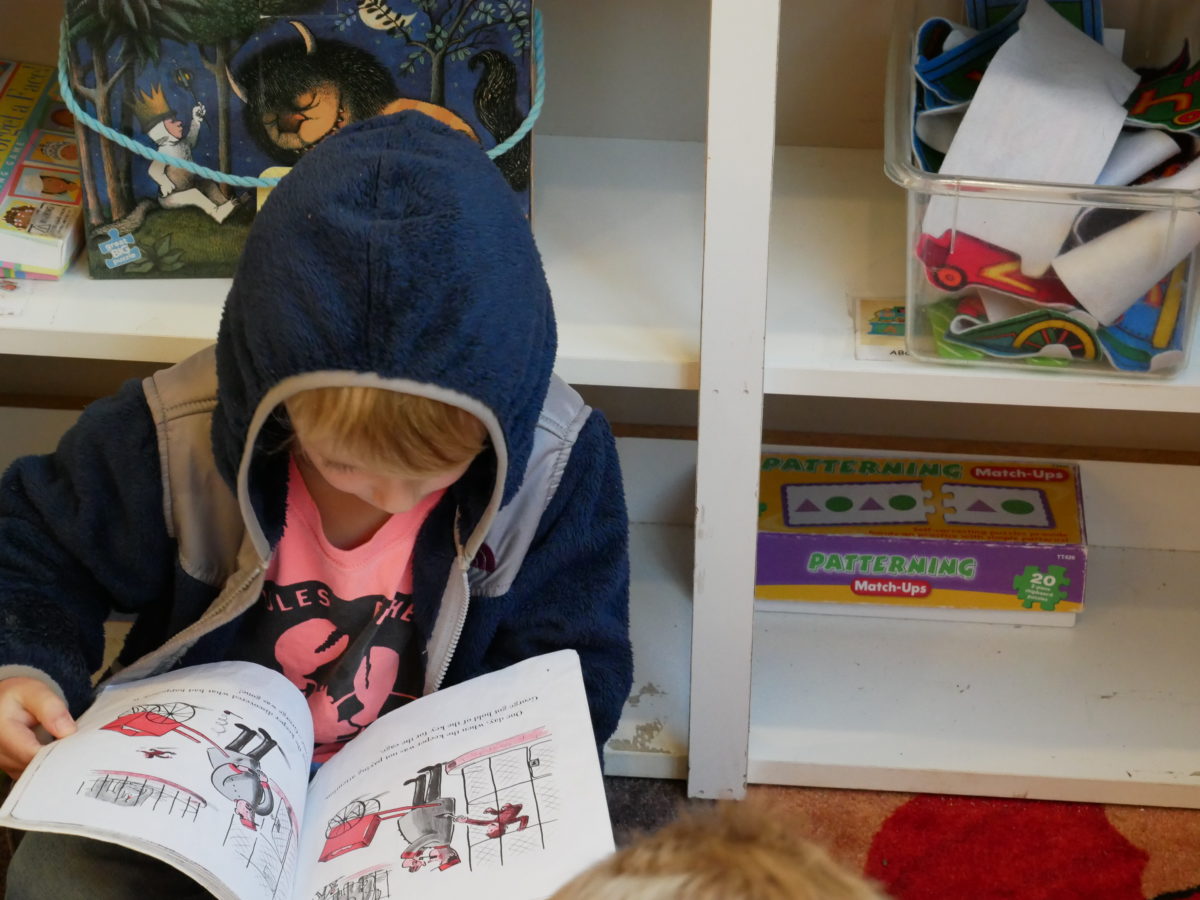
Share this story
The beginning of 2023 used to sit heavy in the minds of early care and education providers, administrators, and advocates in North Carolina. That’s when temporary federal funds stabilizing the state’s child care network were set to run out.
Providers who had increased teachers’ wages with the money were afraid they’d have to return to lower wages and risk losing teachers, or increase parent fees and risk losing children.
Those fears aren’t gone, but the state Division of Child Development and Early Education (DCDEE) bought some time with another allotment of federal funds. That scary date is now 2024.
![]() Sign up for Early Bird, our newsletter on all things early childhood.
Sign up for Early Bird, our newsletter on all things early childhood.
In the meantime, the General Assembly is returning this month for a long session to determine its budget for the next two years.
Early childhood proposals will likely include asks for more child care stabilization funds for the short term, teacher compensation supports and new funding models for the long term, and boosts to existing programs like Smart Start and NC Pre-K.
Policymakers will also consider supports for pregnant mothers on Medicaid, as well as expanding Medicaid to cover many early childhood teachers and families with young children.
Continued stabilization
Advocates are pushing for funds this legislative session to support early childhood programs through their continued pandemic recovery.
“The child care field, because it was so incredibly underfunded before COVID, is still reeling from the effects of COVID more so than other industries,” said Elaine Zuckerman, advocacy and communications director at the NC Early Education Coalition. “… We still need that sort of one-time stabilization type of funding, because we aren’t stabilized yet.”
The coalition is asking the General Assembly for a one-time $300 million investment this session to help teachers stay in classrooms and providers keep their doors open.


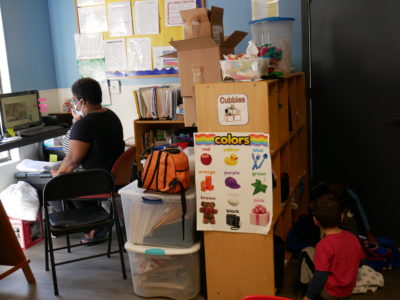
DCDEE Director Ariel Ford said programs have used the stabilization funds so far to increase wages, offer benefits to staff, update facilities, and provide tuition waivers to families during pandemic shutdowns.
“The investment that the federal government gave to the state and the state has given to these small businesses has paid off in the people that work for them and the families that use their service,” Ford said.
Rep. Ashton Clemmons, D-Guilford, co-chair of the bipartisan early childhood legislative caucus, said the caucus is aware of that looming cliff.
“We are talking about understanding the fiscal cliff of 2024 when the federal dollars run out — not that we have a solution right now, but I think that that is looming is relevant,” she said.
A retention tool
For multiple sessions, early childhood advocates have asked legislators to expand Child Care WAGE$ statewide. This session will be no different.
The program gives early childhood teachers wage supplements based on their education level. To receive the supplements, the teacher has to agree to stay at the child care program for six month increments.
For now, it’s up to a county’s local Smart Start partnership to decide whether to fund WAGE$ through its local budget. The program is run by the Child Care Services Association (CCSA), is available in 63 out of 100 counties, and reached 4,018 recipients in 2021-22. The average six-month supplement is $1,203, according to CCSA’s website.
In previous sessions, proposals asked legislators to provide separate funding outside of Smart Start budgets to ensure access everywhere.
The program is evidence-based. A Virginia study found programs with teachers receiving $1,500 wage supplements over eight months saw a 11% decline in turnover across early childhood settings. In child care centers, turnover was cut in half.
Retaining early childhood teachers matters for families who need to work, but it also matters for children’s development.
A 2019 study found teachers leaving within a school year in Head Start was negatively correlated with children’s academic skills, like language and literacy, as well as their social and behavioral self-regulation skills.
“We are now currently in a crisis where the workforce is not keeping up with the demand,” Clemmons said. “And it’s really preventing babies right now from getting what they need and families from being able to fully engage in the workforce of North Carolina. Should WAGE$ be a statewide strategy, and should there be changes made so there’s not inequities from what an early childhood educator in one county is able to access versus another, and does it make sense to make some adjustments to it knowing the crisis that our workforce is in now?”
Innovations
How to subsidize a mostly private market so families have more access to high-quality care remains an open question for North Carolina. Policymakers will likely consider models from elsewhere this session.
In Michigan, a “Tri-Share” program is gaining the attention of policymakers and funders. The program splits the cost of child care among employees, employers, and the government.
The program is serving 59 out of Michigan’s 83 counties, with “facilitator hubs” that collect payments from employees, employers, and the state that then are deposited to child care providers. The hubs recruit employers in the region and help eligible employees find licensed care. Last year, 102 employers across various industries had signed on, 223 more children were receiving care, and parents were saving up to 66% of their previous costs.
“How can we think of lots of ways really to incentivize the business community to be part of the solution?” Clemmons said.
Legislators will also be studying a model supported by national organization Business of Child Care called Flex Plex, which is being implemented in Yadkin County.
Clemmons said the model is community-driven and “an efficient way to use resources to increase access to child care slots in a community.” She described Yadkin County’s approach as creating facilities in between child care centers and a home-based programs. These two models currently have different licensing standards.
“Right now, we don’t have a licensure avenue for them,” she said.
The chairs of the task force will be visiting to learn more later this month. The goal is to highlight a creative solution and ensure “our current licensing isn’t a barrier to innovation,” Clemmons said.
Ashe County cross-sector leaders are planning a proposal that would open three high-quality child care rooms within the school district’s pre-K building. The model would also provide lab experiences for prospective early childhood teachers. Tuition would be subsidized on a sliding scale. The pilot would be studied as a proof point, with an aim to be replicable in other communities.
Boosting programs
Funding requests for the early childhood public programs that North Carolina does have are also on the table this year.
NC Pre-K
NC Pre-K is the state’s preschool program targeted to 4-year-olds in families with incomes at or below 75% of the state’s median income. Children might also be eligible if they have a family member in the military, have limited English language proficiency, or have a developmental disability or educational need.
Last year, the state allocated $9 million in recurring funds to increase the rates that programs receive to serve 4-year-olds. The budget item noted that the money is intended to increase wages for teachers in private programs, who often make less than NC Pre-K teachers in public settings and lack benefits that public school teachers receive.
The coalition is asking for another boost in the reimbursement rate, as well as an increase in the administrative rate for NC Pre-K contractors (either Smart Start partnerships or school districts). The group has not released specific dollar amounts.
Check out the articles below for more on how NC Pre-K’s funding model affects children’s access across communities.
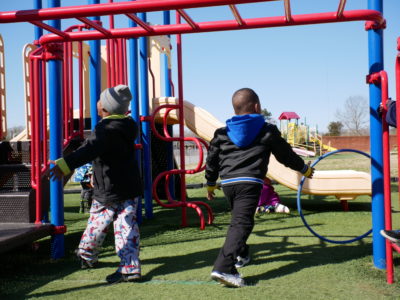

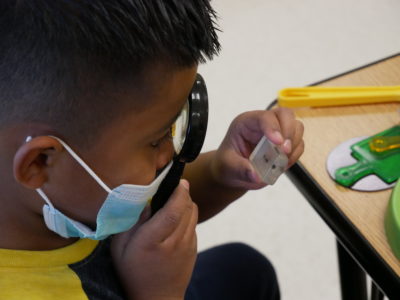
The State Board of Education is requesting $1.9 million in 2024 and about $993,000 in 2025 for a pre-K literacy assessment to better understand students’ reading skills.
Leandro
The Leandro Comprehensive Remedial Plan also includes several early childhood funding requests for 2024 and 2025.
The plan recommends more than $316 million to increase NC Pre-K access over the two years, $600,000 for state-level staffing, and $16.1 million to provide transportation for NC Pre-K students. It asks for $35 million to strengthen the state’s NC Infant Toddler Program, which serves children younger than 3 years old with special needs and their families.
The plan also asks for $347.2 million for Smart Start over 2024 and 2025, $10 million for strengthening transitions between early childhood and elementary experiences, and about $2 million for improving state early childhood data systems.
Read more of EdNC’s Leandro coverage here.
Subsidized child care
There will likely be a proposal this session similar to House Bill 574, filed in 2021, which would have established a floor rate for the state’s subsidized child care program. That bill didn’t go anywhere.
A floor rate would mean child care programs serving children with subsidized rates would receive at least the state’s average rate.
Right now, the rates that programs receive vary widely from county to county. They are based on market surveys. Advocates argue they are better indications of what parents can afford than what high-quality care costs.
“That’s just really inequitable,” said Jenna Nelson, executive director of the coalition. “You still have to hire the same qualified teachers, you still have to have the same amount of materials. Yes, there are some subtle differences. Rent, land, the building might be a little bit cheaper. The cost of living might be a little bit less … but you’re still not paying teachers a livable wage, even in a rural area where cost of living is a little bit less.”
Though most of the funding for the program comes from the federal government, the state decides how to distribute that funding. Last session, the legislature increased the rates from the ones in the 2015 market survey to the 2018 market survey. The 2021 survey report was released last year.
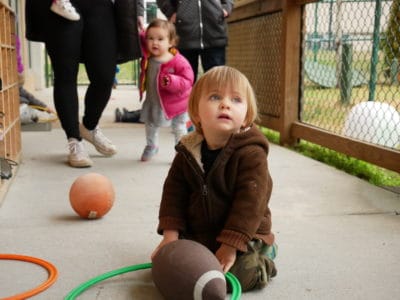
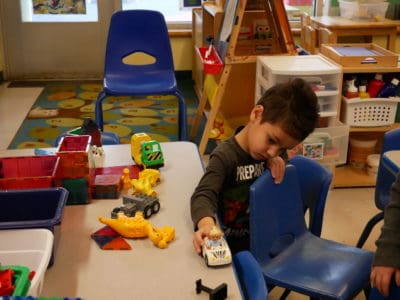
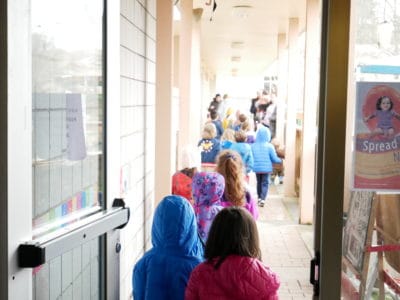
Reducing infant mortality
North Carolina’s infant mortality rate was the eighth highest in the country in 2020. Black babies were 2.67 times more likely to die in the first year of life than white babies.
A new package of policies supported by the Child Fatality Task Force aims to take care of pregnant mothers, reduce infant deaths, and reduce that disparity.
The recommendation asks for about $9 million in 2025 in recurring funds to do three things:
- Increase the maternity provider Medicaid reimbursement rate to address obstetric care access gaps.
- Cover doula services to support mothers during labor and delivery.
- Fund group prenatal care during pregnancy.
Research on doula services during birth found that women were less likely to have cesarian births, use pain medication, and have negative feelings about their birthing experiences and more likely to have shorter labor and “spontaneous” vaginal births.
Having a group of pregnant women who are due around the same time receive prenatal care together can be particularly helpful for populations who experience higher rates of infant mortality, such as Black women, according to The American College of Obstetricians and Gynecologists. The method has been associated with decreases in the rates of preterm birth and babies born with low birthweight.
“They get to hear the questions that the other moms are asking so that they can be thinking, ‘Oh, I hadn’t thought about that,'” said Belinda Pettiford, head of the women’s health branch at the Division of Public Health. “It also develops a supportive environment. We’re all in it together.”

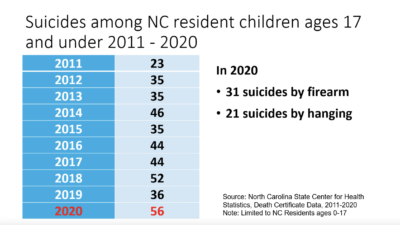
Sen. Jim Burgin, R-Harnett, a co-chair of the early childhood legislative caucus, is a supporter of these initiatives. Burgin has a goal of cutting the state’s infant mortality rate in half over the next two years, he said.
“As soon as we found out a woman is pregnant, I want us to offer her a bunch of wraparound services to, No. 1, make sure she gets the first three months of her pregnancy off to a great start,” Burgin said. “… I want to spend a little money all along and try to keep from spending big money later in their lives.”
Medicaid
Last session, a bill was passed to increase Medicaid coverage of a mother to the first full year after a child is born.
Medicaid expansion, which is slated to be one of the top issues of this coming session, would make a large impact on families with young children. NC Child points out in their priorities that at least 125,000 of uninsured North Carolinians are parents.
On top of those targeted supports, expansion would “have the biggest impact on the most people when it comes to prenatal health and maternal mortality,” said Zuckerman with the coalition.
It also would affect lots of early childhood teachers.
More than half of child care teachers were working in programs that did not provide health care coverage, a 2019 CCSA study found. In 2015, one in five child care providers had no health insurance.
Health care access is key to ensuring that early childhood teaching is a sustainable career, Zuckerman said.
“It’s that whole package, so how can we make sure that teachers have health care?” she said. “Medicaid expansion would certainly help. If we can get full Medicaid expansion, what other avenues are there to get health care for these teachers?”
Legislature 2023
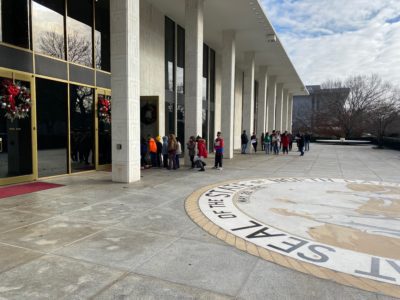
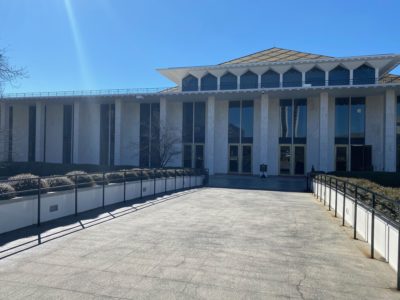

Recommended reading
